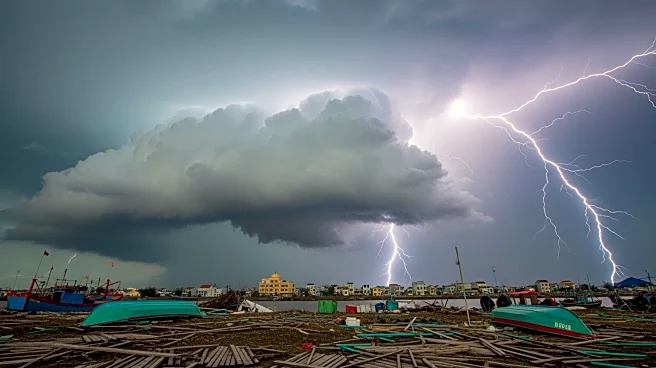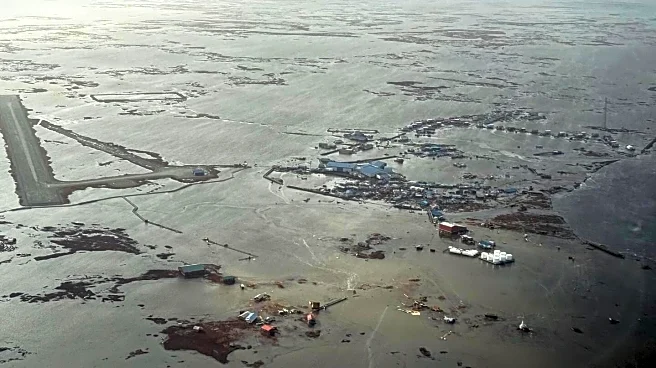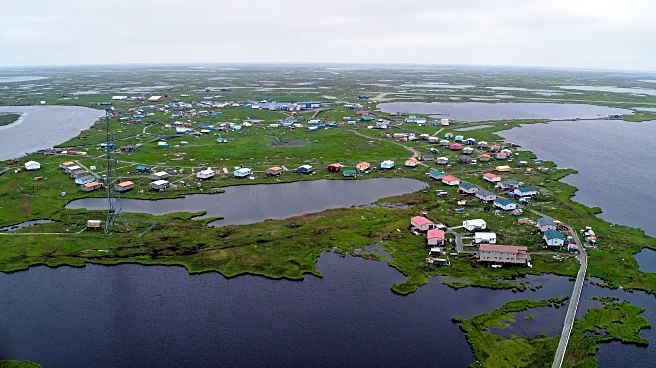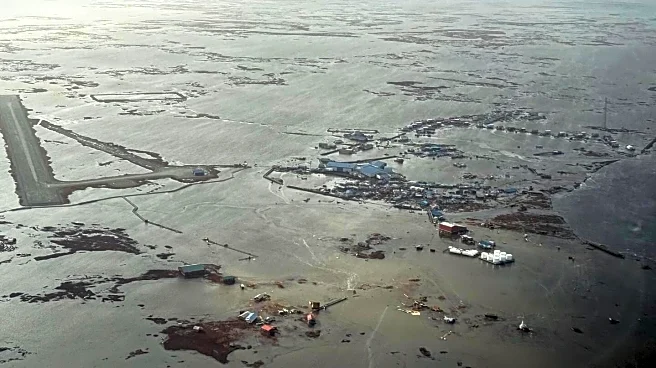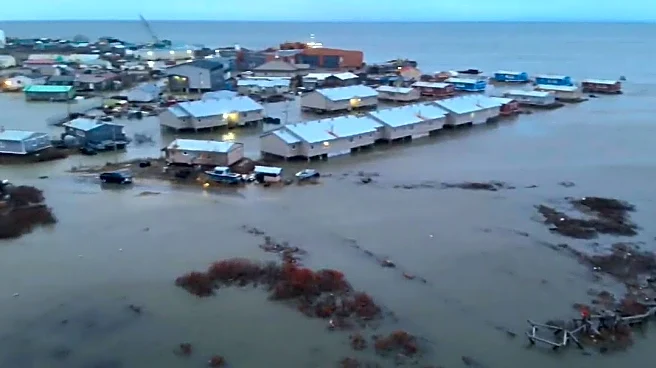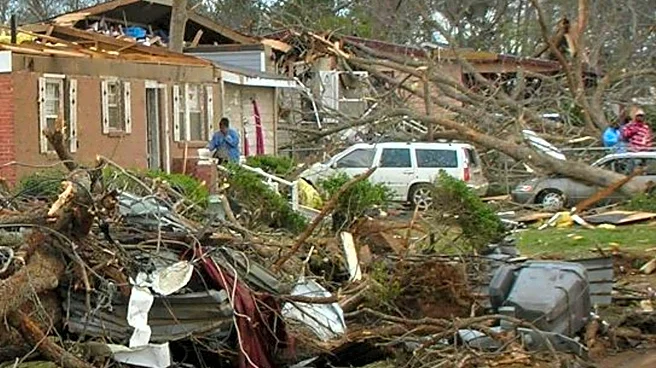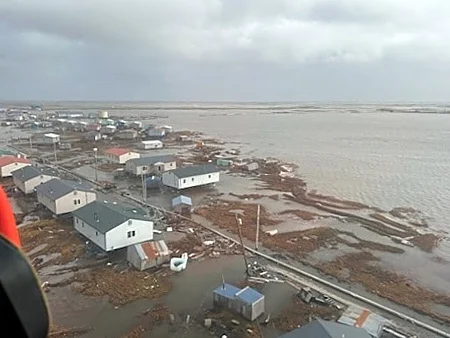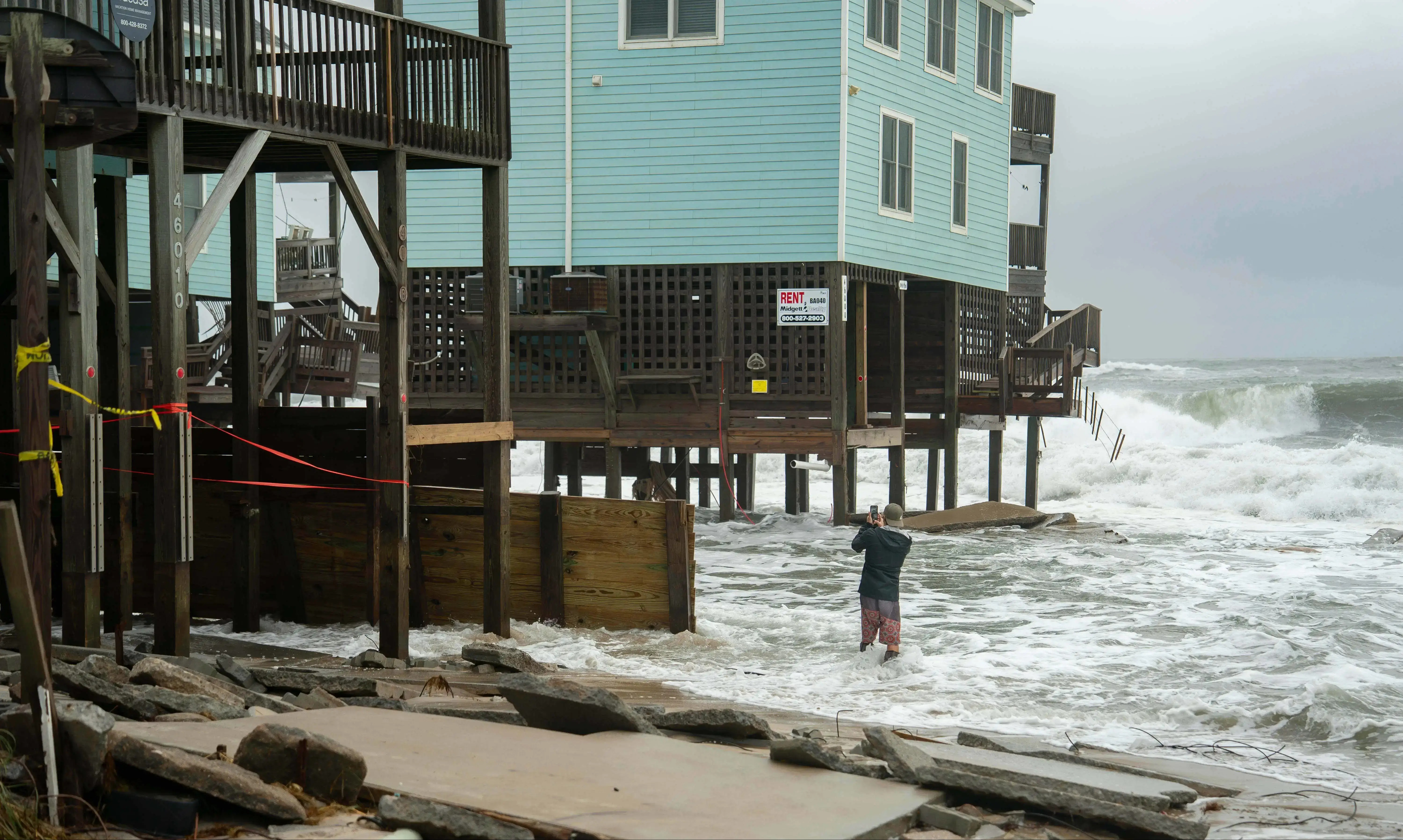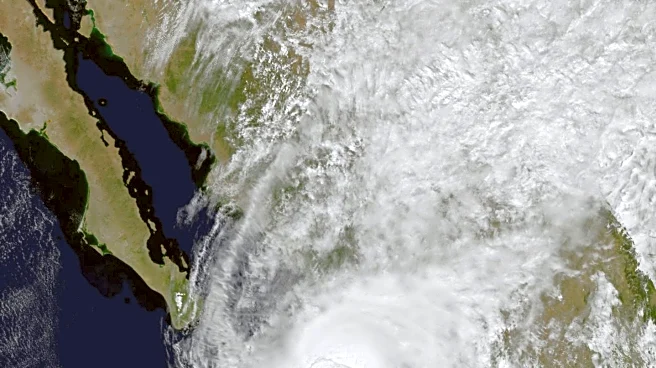What's Happening?
In the late hours of October 11, the remnants of Typhoon Halong struck Alaska's southwest coast, causing significant destruction across the Yukon-Kuskokwim Delta. The storm brought hurricane-force winds
and record flooding, severely impacting numerous Alaska Native villages. The destruction included snapped utility poles, uprooted boardwalks, and homes dislodged from their foundations. The State Emergency Operations Center reported that more than a thousand people have been displaced, with some villages like Kipnuk and Kwigillingok facing near-total evacuation. The remoteness of the affected areas has complicated evacuation efforts, with some residents being airlifted to Anchorage due to damaged runways. The storm's sudden change in trajectory left little time for preparation, exacerbating the impact on these communities.
Why It's Important?
The devastation caused by Typhoon Halong highlights the vulnerability of remote Alaskan communities to climate-related disasters. The Yukon-Kuskokwim Delta, home to many Yup'ik people, is particularly susceptible due to its low elevation and thawing permafrost, which leads to erosion and instability. The storm underscores the urgent need for climate adaptation strategies, as nearly 150 Alaskan communities may need to relocate due to similar climate-driven factors. The economic and logistical challenges of rebuilding in such remote areas are significant, with the cost and complexity of transporting materials posing major hurdles. This event also raises concerns about the preservation of cultural heritage, as many residents have deep historical ties to the land.
What's Next?
The immediate focus is on providing relief and shelter to the displaced residents. Alaska Governor Mike Dunleavy has called for a federal disaster declaration to aid recovery efforts. Long-term, the affected communities face difficult decisions about rebuilding or relocating. The logistical challenges of reconstruction in remote areas, coupled with the ongoing threat of climate change, suggest that comprehensive planning and support will be necessary. The situation also calls for increased investment in infrastructure that can withstand extreme weather events, as well as policies that address the root causes of climate vulnerability.
Beyond the Headlines
The storm's impact extends beyond physical destruction, affecting the cultural and emotional well-being of the affected communities. Many residents have expressed reluctance to leave their ancestral lands, which are integral to their identity and way of life. The loss of subsistence resources and ancestral graves adds to the trauma, highlighting the need for culturally sensitive recovery efforts. This event may also prompt broader discussions about the ethical implications of climate change and the responsibility of governments and societies to protect vulnerable populations.
